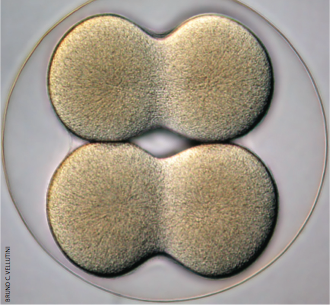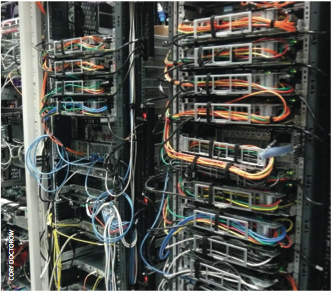MONDAY, 13 OCTOBER 2014
Each of us is made up of about 37.2 trillion cells. They all originate from one single cell, the zygote, which divides multiple times to build a collection of cells that then gives rise to a functional organism. Yet none of them are alike. Each single cell of our body is unique and so are we. We worship our individualism by personalising gifts, mobile devices, and even the designs of debit cards. But how about personalised medical treatment? Would it not be a logical consequence of our uniqueness to be treated with tailored medication, in the right dose at the right time, to be cured quickly and avoid any possible adverse effects?In order to create such a truly personalised medicine we have to understand the human body extremely well, at the single cell level. This ambitious goal is accomplished by single cell analysis. Single cell analysis embraces the uniqueness of each individual cell in an organism. Cell types, such as neurons or immune cells, differ in their structure and anatomical location within the body.
These differences are often genetically determined by switching on and off certain genes during the development of an organism. Notably, even cells of one type, sharing a common structure and location, are not alike over time. This cellular variation is partially to blame for the diverse range of observed responses to treatments of a disease across individuals.
The current inability to predict an individual’s response to treatment for most diseases means that clinicians must follow a ‘trial-and-error’ approach. A patient with high blood pressure, for example, is placed on a number of medications until the optimal medication is found to reduce this to a healthy level.
Nowadays, clinical diagnostics and research assess characteristics of blood or tissue sample cells by bulk measurements. These data are therefore an averaged response from a mass of cells and can mask valuable information. Bulk screening of a patient’s blood sample, for example, may not reveal a mutation of the p53 gene (a gene involved in cancer development), whereas single cell analysis of the same blood sample might identify some cells carrying this mutation. This information would enable clinicians to react preventatively, and more efficiently, against possible cancer development as cells with a mutated p53 gene can eventually become tumours.
Analysing single cells is challenging if one considers the size of these cells (which are typically about 100 times smaller than a poppy seed), the number of cells (for example 5 million red blood cells in just 1 mm3 of blood) and the diversity of cell characteristics to examine (for example genes, proteins, lipids). A technology that enables single cell analysis must resultantly be able to isolate single cells from a sample; assess the unique information of each of these single cells; and analyse, integrate and interpret the acquired data. Ideally, these steps should be performed
as quickly as possible and take up as little work space as possible; criteria currently best met by the revolutionary ‘lab-on-a-chip’ technology.
These chips are generally about five centimetres by seven centimetres and are made up of a system of channels connected to syringes. Cells in a suspension are introduced to the chip at a rate of several million cells per minute and float through channels just a few micrometres in diameter. Depending on which specific system is used, cells are compartmentalised into wells or droplets. Chips using the well system will trap single cells as they pass through the channels into wells which match the shape and size of a single cell of interest. In a droplet system, cells are trapped in a tiny aqueous droplet which flows within inert carrier oil through these channels.
Each well or droplet functions as an independent laboratory that allows the investigation of a single cell through analytical techniques miniaturized to fit on a chip. This ‘lab-on-a-chip’ can assess several features of a cell ranging from its shape to its ‘-omics’. ‘Omics’ is the large-scale study of genes (genomics, epigenomics), RNA transcripts (transcriptomics), proteins (proteomics), lipids (lipidomics), metabolites (metabolomics) and the interactions between all of these (interactomics).
In order to assess all of these features, several different methods need to be employed. While some of these methods have already been successfully established for the ‘lab-on-a-chip’ technology, the future challenge is to increase the number of methods performed simultaneously per well or droplet. Only a complex analysis will unravel the interconnected chemical and biological processes occurring in our body.
Moreover, the ‘lab-on-a-chip’ technology offers biologists the chance to study these dynamic processes over time rather than via a snapshot style recording, which obviously does not represent living systems accurately. This culminates in the collection of multiple data points for each cell, whereupon each recorded parameter can increase the complexity of the data set very rapidly. This curse of dimensionality is a major challenge for analysing and interpreting single cell data.
At the end of this process, the interpretation of single cell data can result in either an individualised clinical diagnosis for the patient or the identification of interesting target cells and their products. In the case of interesting targets, viable cells can be retrieved from within the chip and, with appropriate manipulation,
can subsequently be used for the production of hormones, vaccines or antibodies, which would all be specific to that individual donor patient.
Multidisciplinary research fields comprising biology, informatics and physics all work on the development of new techniques that enable single cell analysis. The Nature Publishing Group has selected single cell sequencing as their “Method of the Year for 2013”, a distinction previously awarded to techniques such as super-resolution microscopy (2008). Several companies have recently been working on the goal of large-
scale, single cell analysis. For example, Fluidigm located in San Francisco (US) has launched single cell devices for sequencing that have contributed to the discovery of unrecognised immune cells, whilst Sphere Fluidics in Cambridge (UK) has patented a novel technology platform enabling ultra-high throughput analysis of single cells in picodroplets.
The Nobel Prize winner Sydney Brenner once stated, “progress of science depends on new techniques, new discoveries and new ideas, probably in that order”. The new technologies that allow us to study our body on a single cell level will unravel crucial molecular and cellular mechanisms which will be instrumental for the development of novel therapeutic concepts. Inevitably, several moral and ethical questions will arise such as intellectual property, regulatory oversight, reimbursement and confidentiality. Nevertheless, the potential for revolutionising medicine is immense. Single cell analysis may just herald in the era of personalised treatment for a disease.
Verena Brucklacher-Waldert is a post-doctoral researcher at the Babraham Institute.



